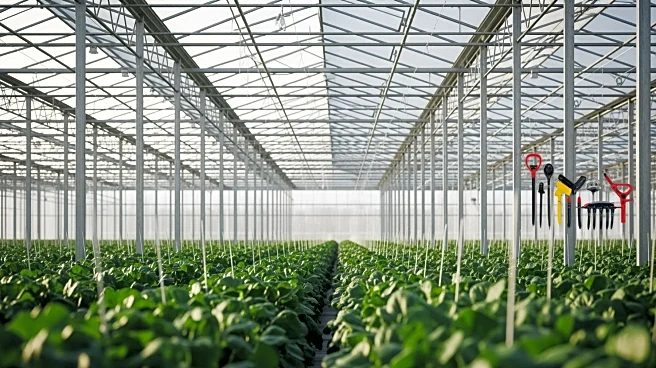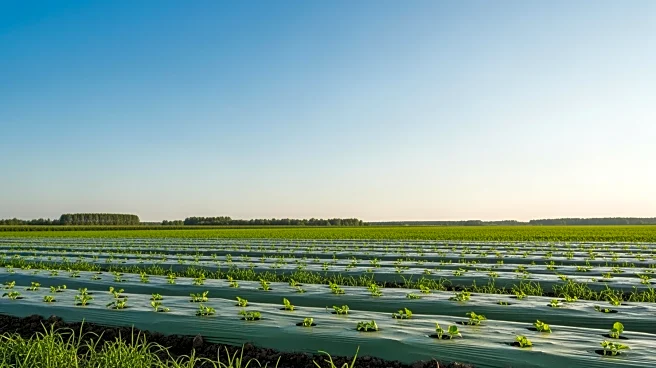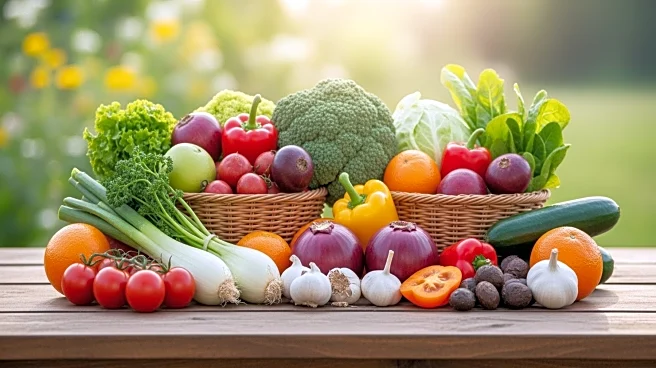What's Happening?
The agriculture nets market in the U.S. and Japan is experiencing significant growth, driven by rising demand for crop protection solutions. The market, valued at $11.82 billion in 2024, is projected to
reach $19.38 billion by 2033, with a CAGR of 5.65%. Recent product launches include UV-resistant shade nets in California and Florida, insect-repellent nets in Texas, and smart shading nets with climate-responsive materials. In Japan, new netting systems for urban farming and AI-enabled microclimate monitoring nets have been introduced. The market is also seeing mergers and acquisitions, such as a U.S. manufacturer acquiring a tech startup for smart nets, and government approvals for innovative netting materials.
Why It's Important?
The growth of the agriculture nets market reflects the increasing emphasis on sustainable and efficient farming practices. The introduction of advanced netting solutions addresses challenges such as extreme weather, pest control, and environmental sustainability. These developments are crucial for enhancing crop yields and reducing dependency on chemical pesticides. The market expansion benefits agricultural producers by providing tools to improve productivity and resilience. Additionally, the focus on eco-friendly and biodegradable materials aligns with global sustainability goals, offering long-term environmental benefits. The involvement of government agencies and private investors underscores the strategic importance of this sector in supporting food security and agricultural innovation.
What's Next?
The agriculture nets market is expected to continue its growth trajectory, driven by technological advancements and increased investment. Companies will likely focus on developing more sophisticated netting solutions, incorporating AI and IoT technologies for real-time monitoring and management. Government incentives and subsidies for sustainable agriculture practices will further boost market adoption. As climate change impacts become more pronounced, the demand for climate-resilient agricultural solutions will rise, prompting further innovation and collaboration among industry stakeholders.












